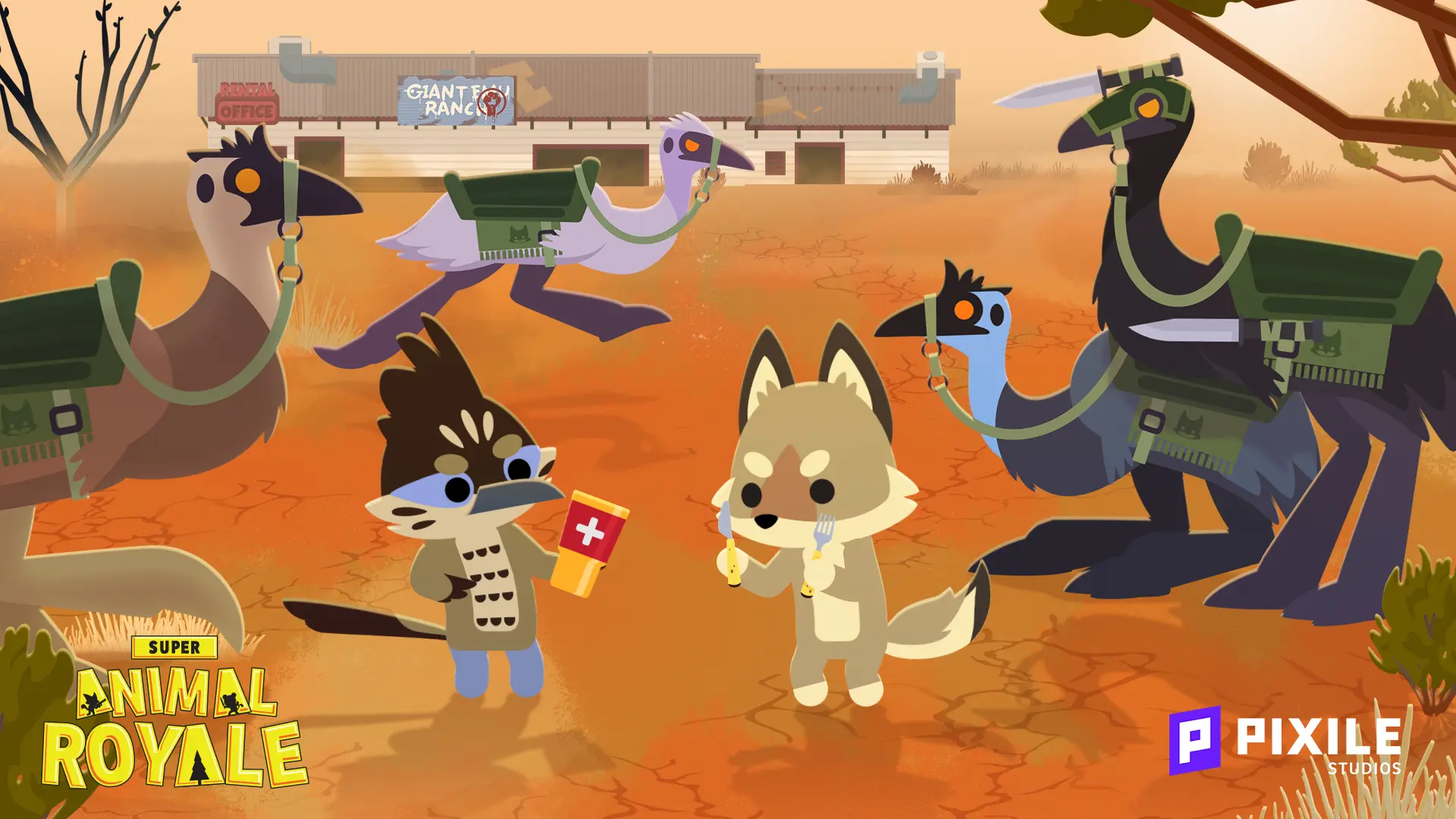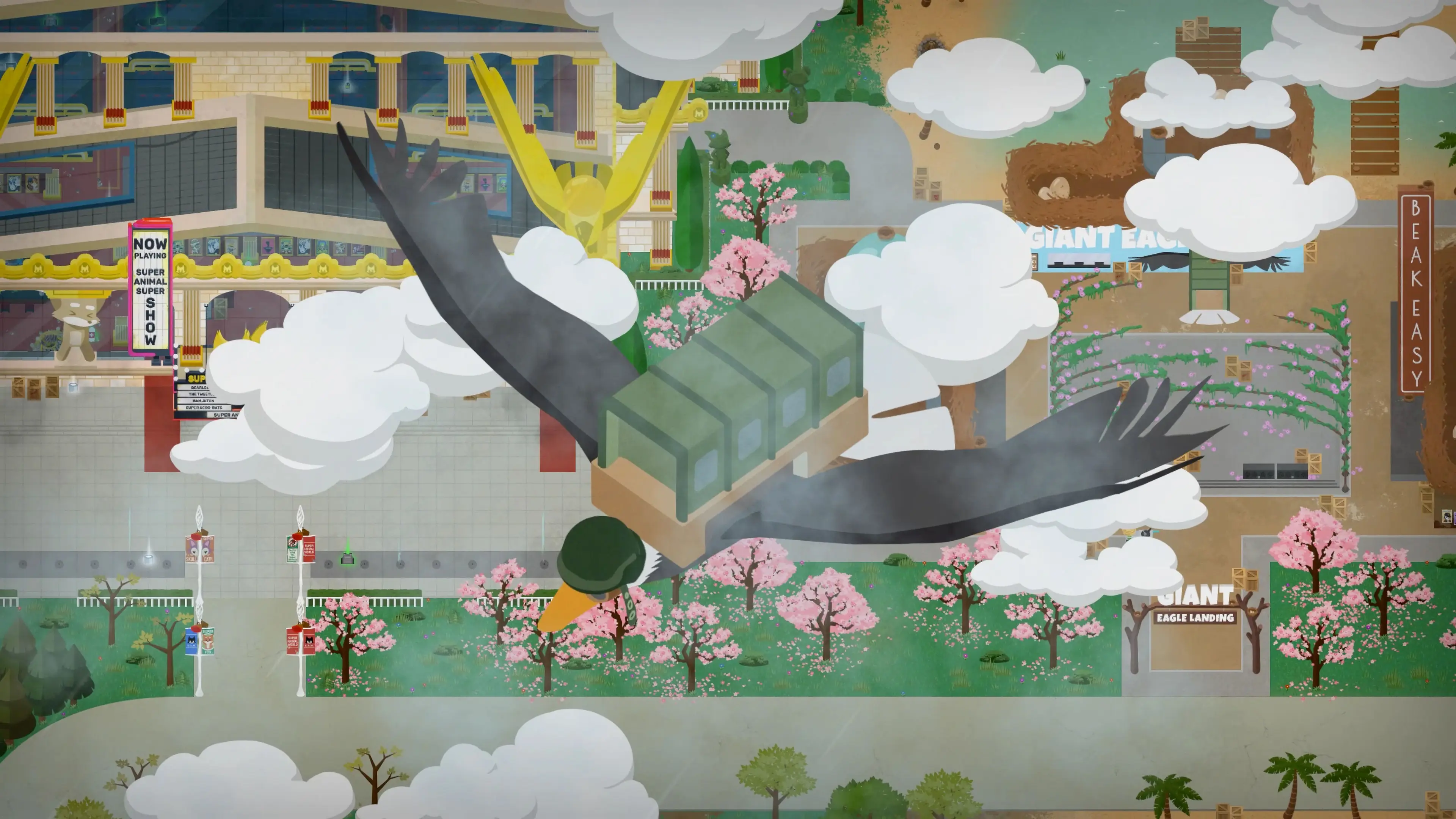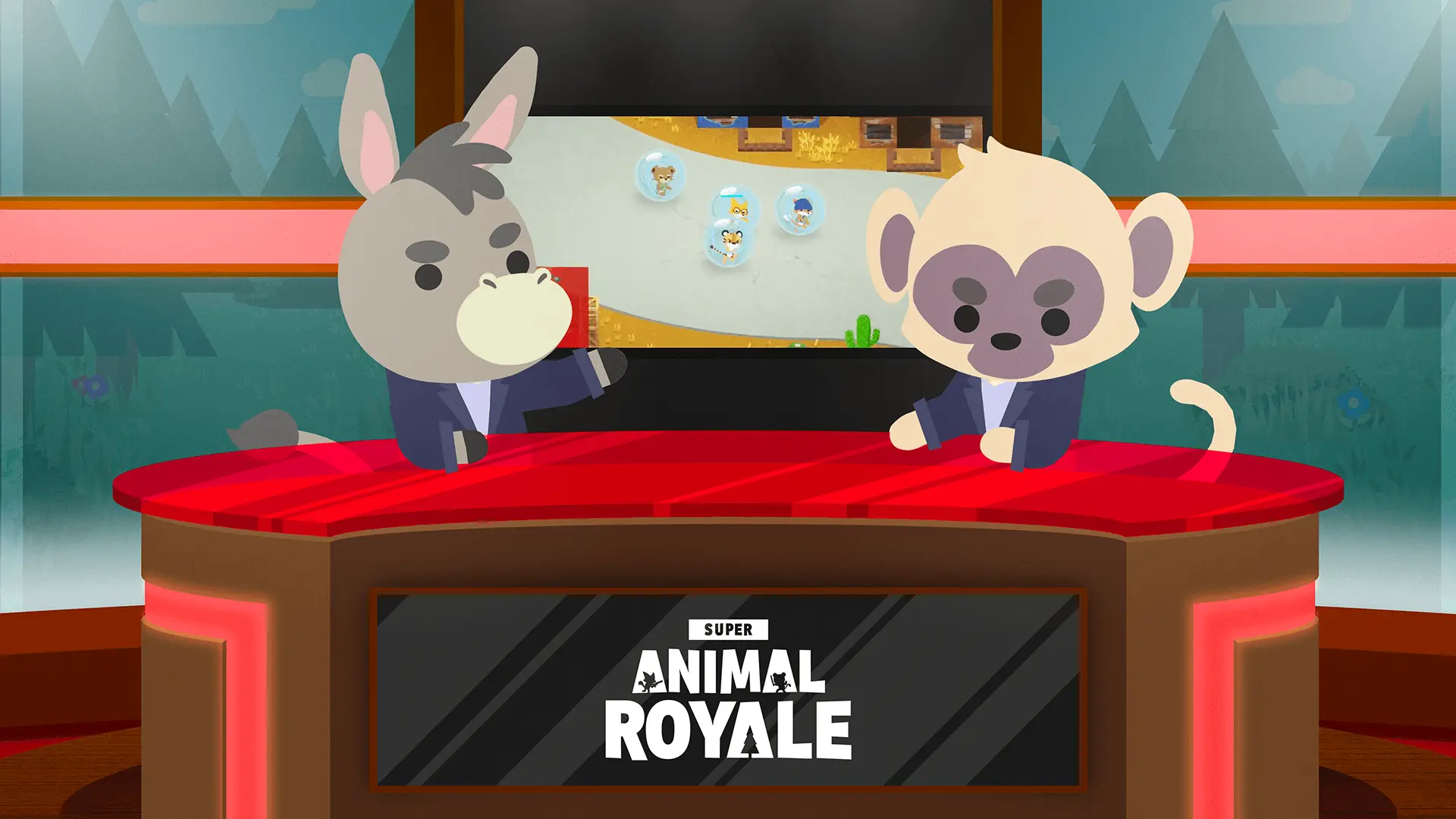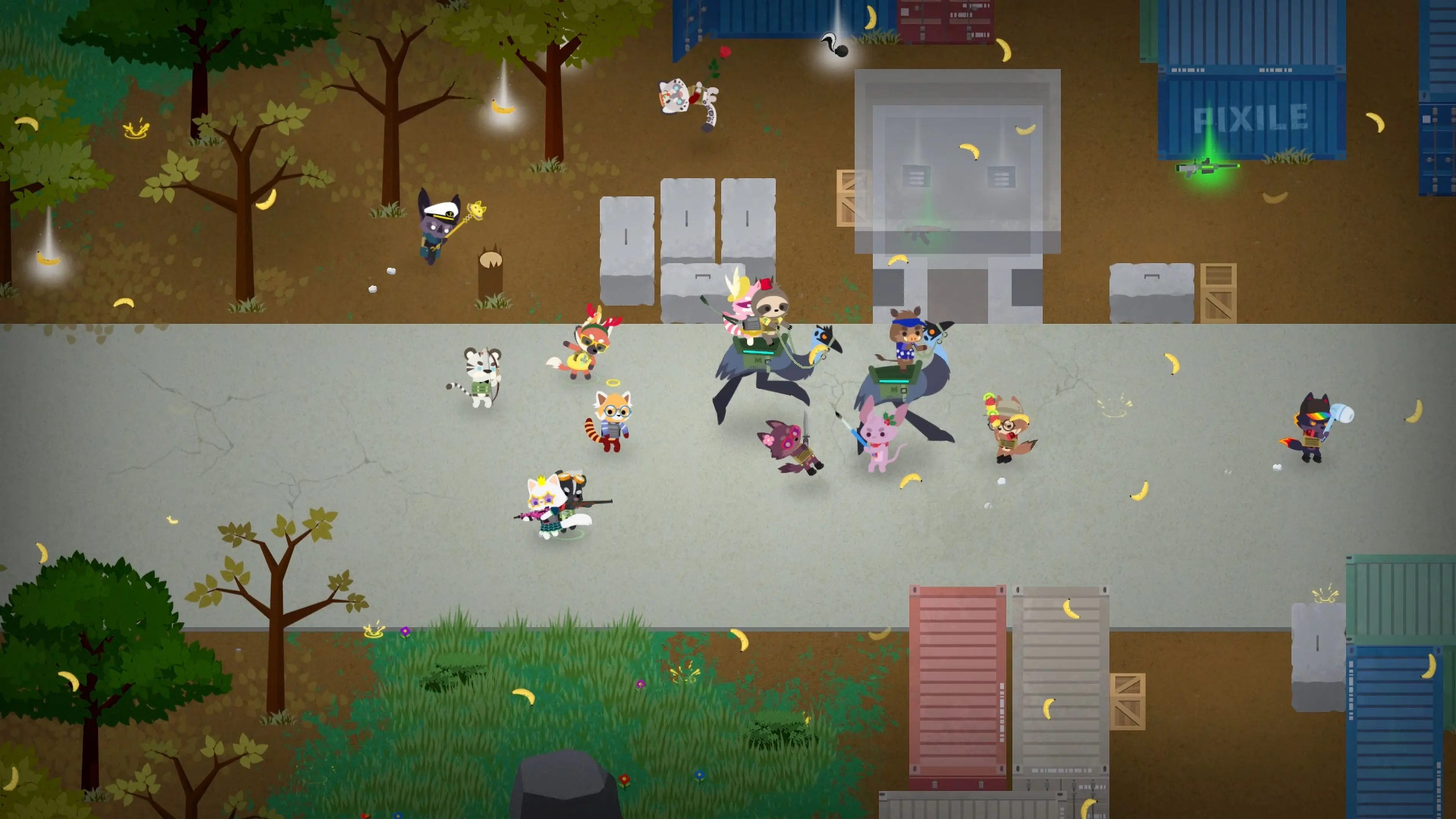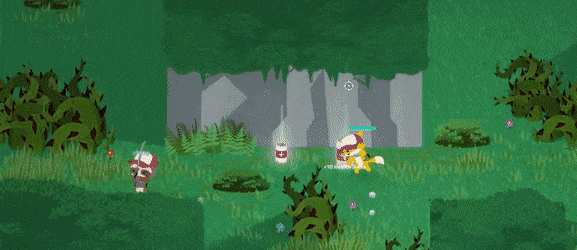If you ever wanted to play as cute animals in a fight to the death, then Pixile’s Super Animal Royale might be just the thing for you! On the surface, it looks like a cute, cartoon-y platform, but underneath lies a frenetic, 64-player, top-down battle royale. It’s definitely an intriguing premise, and we were given the chance to speak to Pixile Studios’ co-founder Michael Silverwood regarding the idea behind the game, the battle royale landscape and more.
MP1st: Tell us about yourself and the history of the studio.
Michael Silverwood: My co-founder Chris Clogg and I have known each other since we were 3 and grew up on the same street together. As kids we were really into games, film, and animation. We learned to make animated videos in Flash and maps/mods for games like Warcraft 3 and Team Fortress 2. In university Chris went into Computer Science and I did a Combined Major in Business and Computer Science, both at UBC. We had been doing freelance work building websites and mobile apps for companies and always wanted to build a full game, so for 2 years while at UBC we worked on our first game, Stratosphere Defense, and released it on the App Store in 2013. It was a critical success and got lots of featuring from Apple, but didn’t generate enough income to turn into a full-time business. As such, I got a job working in venture capital helping early stage tech startups build their first products and launch their businesses, and Chris worked with us building mobile apps for the companies. All the while we kept prototyping on the side and knew we wanted to build another game someday, whether it could become a full-time career or not. By October 2017 the prototype for Super Animal Royale had become fun enough that we knew we wanted to turn it into a full game, so we quit our jobs in December 2017 and began building a team. By December 2018 we had assembled our core team, a healthy Discord community and were ready to launch the game into Early Access.
MP1st: I understand the studio is doing remote work, was this always the case even before COVID-19? How do you think it has impacted the industry as a whole, working from home versus being in an office space? Do you think more companies will start offering this as a full option?
Michael Silverwood: We’ve been remote from the beginning since I was living in San Francisco and Chris was living in Vancouver when we first started. We were used to working together remotely so we decided to build a distributed team since that made it a lot easier to find the best people to join us without needing to worry about location. There are certainly both pros and cons to working remotely, but we’ve found that it works great for us. I do think it’s easier for teams who start remote from the beginning than those who need to transition from working in-person to remote. Matt Mullenweg’s writing and speaking on this subject has been a big inspiration, and we’ve seen first-hand how distributed, asynchronous work can be effective. Even though working as small team is very different than running a huge organization like Automattic fully distributed, we’ve experienced many of the benefits he describes at level 4 and level 5 of his pyramid of “Distributed Work’s Five Levels of Autonomy” (https://ma.tt/2020/04/five-levels-of-autonomy/).
MP1st: What is behind the idea of Super Animal Royale? Why go with the Battle Royale genre?
Michael Silverwood: Chris and I were big fans of some of the early battle royale games like H1Z1 and PUBG so we were curious about whether the genre would be able to translate well to top-down. At first it didn’t, and our first prototypes weren’t promising, but eventually with the line-of-sight fog-of-war mechanic it started becoming really fun even in prototype form so we knew we were onto something. The emergence of the battle royale genre was a pretty big moment for shooters in general, similar to how much Counter-Strike or Battlefield 1942’s Conquest modes changed what a multiplayer shooter can be, and battle royales are especially unique in how they weave in mechanics from the survival genre so seamlessly. We wanted to contribute something unique to the genre, and I think SAR does that with its top down perspective, line-of-sight shadows, short match length, and streamlined mechanics that make it relatively friendly to learn for a battle royale, while still having a high skill ceiling and surprising depth in its mechanics. Despite it being a multiplayer game, we also wanted to build a deep world and characters, so from the beginning we developed a backstory document with the history of the world, and everything we do has to be consistent with that.
MP1st: I’m sure the team went through plenty of different prototypes during development, it’s always interesting to hear about ideas/concepts that didn’t make it, care to share?
Michael Silverwood: Our first game, Stratosphere Defense, was a Tower Defense game, so we had lots of prototypes for what sequels or expansions of that world could look like. It’s a genre we love, but none of those prototypes ever reached the point where we felt as confident about them as we did with Super Animal Royale. Our first top-down battle royale prototype was built in early 2016, but before we had the line-of-sight fog-of-war most of the fighting would end up happening on the edges of the screen which wasn’t very fun.
MP1st: About the “light bulb” moment? At what point did the team all look at each other and say they had something really special here?
Michael Silverwood: The first light bulb moment was the moment when we implemented the line-of-sight fog-of-war system and immediately combat became far more interesting since you could get similar moments of surprise to 3D games where you breach a building or come around a corner and find yourself face to face with an enemy. The second light bulb was when we finished establishing the framework for what the world and characters would look like, and implemented the first prototype art and got to run around forests and towns as angry, weapon-wielding animals. At that moment we knew it was a world we wanted to keep exploring and expanding upon.
MP1st: Do you feel that there is some pressure in the Battle Royale Space when looking at say Apex Legends or Call of Duty Warzone? Were they used as references in terms of what worked or what didn’t?
Michael Silverwood: I think the biggest challenge in games is just designing something that is itself fun and engaging enough to be worth a player spending their time in it. There’s a lot competing for people’s attention these days. We play a wide variety of different games across genres and our favorites can be very inspiring, but we try not to get hung up on comparing ourselves to other games aside from noticing specific smart mechanics or design details that solve similar challenges we face in trying to design the best game we can. In terms of the battle royale genre, we probably still have the most hours in the early games like H1Z1 and PUBG, but Fortnite, Apex Legends and Call of Duty: Warzone have all taken the genre in interesting directions and made significant contributions by refining and improving upon it.
MP1st: Lore is often overlooked in Battle Royale games, that’s generally the nature of multiplayer games. You guys have an animated show to do that, how big of an influence will it have on the game itself and vice versa?
Michael Silverwood: We were inspired by the way that epic fantasy writers craft their worlds before writing their first stories, and felt that the same approach could work great for a multiplayer game since players spend so much time exploring the open environment. As a result, we’ve made lore and worldbuilding a central part of the game since the very beginning. Even if the story isn’t told linearly or explicitly most of the time in-game, players can piece together what they find in the world to understand the context they find themselves in. We find that this style of storytelling is such a great fit for the interactive nature of the medium. During the design of each new environmental set piece, character and mechanic we refer to and expand upon the lore bible to make sure that the world continues to feel consistent. As the world has kept expanding, it has become more and more natural for us to imagine what would make sense within it, and what would motivate the characters within it.
Most of the linear storytelling we do takes place in our animated series, Super Animal Royale Tonight, and we time new episodes to release alongside major updates so that we can sync up the storytelling with new content in the game. The show takes place entirely on the island in locations you can visit. After you see new environments and animals in the show, you can jump in and play in those same spots and unlock those same animals in the latest update to the game. In many cases, the aftermath of specific events seen on the show can be seen on the in-game island too, like the rat prisoner and makeshift rebel-made SAR Tonight set in Superite Mountain from Season 1 Episode 4.
MP1st: I also notice the show is used as a community highlight for top plays. That to me is pretty f’ing amazing, and I always feel more developers should do stuff like that. It’s a great way to really push for community interaction. What made you want to do this?
Michael Silverwood: The pilot episode of SAR Tonight also served as our launch trailer for Early Access, so it’s an idea we had early on that we hoped we could turn into a full animated series. We were so impressed by the level of skill of some of the early players and the funny things that they’d capture in-game so we wanted to find a way to showcase them. At the same time, we had the concept of Super Animal Royale being a show as part of the backstory, so we decided to develop the in-world show into an actual show. As the game has grown and the series has progressed we’ve become more and more ambitious with the storytelling and production values of the show and it has become a great storytelling medium in its own right. In addition to the animated sequences, we also started blending in-game sequences into the storytelling of the show, which we coordinate and record online with our “Animal Army” Discord community members. We were also seeing so much amazing fan art from our community that we decided to start hosting art contests that get their own segment on the show in addition to a website (https://artcontest.animalroyale.com/) and an in-game art museum (the Super Museum of Modern Art).
For context of how Super Animal Royale Tonight’s story weaves into the story of the game itself, I’ll provide a brief summary of some of the backstory of the game below. I’ll keep it brief though since we mostly let players piece the story together for themselves (there’s actually a popular community Discord server that is dedicated to figuring out the details of the backstory through exploring the island).
Super Animal World (S.A.W.) was originally a safari theme park designed to showcase the genetic engineering breakthroughs of its parent company, Pixile Industries. At amusement parks of the past, guests would interact with humans in animal costumes, but at Super Animal World, the mascots were the result of a creative DNA combination of animal, human and heavily protected intellectual property.
Super Animal World was a big hit amongst guests, but less so amongst the Super Animals themselves. Before long, the Super Animal Super Resistance (S.A.S.R.) was formed. Details on what happened next are tightly guarded by the Super Animal World higher ups, and so, what became known as “The Incident” is still shrouded in rumor and hearsay (but a key moment is viewable in SAR’s recent musical trailer
The resulting damage and financial losses caused by “The Incident ” left Super Animal World’s parent company, Pixile Industries, in ruins. The park was too physically and reputationally damaged to re-open, and the company was left with few options.
“The Incident” itself, however, presented an opportunity. The Super Animals had proved themselves ferocious fighters, and Pixile’s creative leaders recognized a potential market for that sort of thing. Super Animal Royale was devised as a way to recoup their investment. Super Animals would be pitted against each other in a winner-take-all island-wide brawl, televised for human entertainment. Super Animal Royale Tonight, hosted by the intrepid (and S.A.W. loyalist) Donk Patrick and Howl Michaels, showcases the top moments from the island.
MP1st: Adorable, but violent, would you say that’s an accurate description of Super Animal Royale? What made the team want to go with that kind of approach? Love the humor by the way.
Michael Silverwood: Completely accurate! We’re big fans of absurd humor. The juxtaposition of cute animals who are surprisingly angry and violent was just really funny to us as a baseline, and the only thing more absurd than that was the process of asking ourselves how and why they would have been created in the first place, and developing the world around that.
MP1st: The game started on PC, and eventually made its way to Xbox and soon PlayStation and Nintendo Switch. That must be pretty exciting for the team to accomplish such a feat.
Michael Silverwood: It’s extremely exciting and surreal to be releasing our first game on the platforms from the companies we grew up with! We’re also really thrilled to be able to support cross-play matchmaking and cross-save since they’re both such new developments in the industry and so player friendly. We’ve also been very lucky to have great partners in Modus to help us navigate releasing on so many platforms at once, which isn’t easy for an indie studio.
MP1st: With the team as large as it is and the game coming to basically every platform, what kind of preparations are being made so the team can deliver updates and content in a timely manner without feeling spread apart?
Michael Silverwood: The Pixile team is only 11 people currently, so it’s definitely ambitious, but Early Access has done a great job at preparing us for it. The game has been live for players in Early Access for 2.5 years now, and through that time we’ve experimented with multiple update cycles from every 1-2 weeks to 3-4 week larger updates. Last year we also released a major update in November that took us more than 3 months to build. We found over time that spacing updates a bit further apart allows each update to feel more significant and allows us the time to do longer term thinking about what we’re headed, but we wanted to find a sweet spot where it wasn’t making players wait too long. Moving forward we plan to settle into a roughly 6 week update cadence that we think will strike a good balance between being frequent, but also allowing each update to feel significant.
MP1st: How has the development process been in terms of porting the game over to console? Any major hurdles?
Michael Silverwood: The porting process has been surprisingly smooth! The game already supported controllers on PC, and Modus’s porting team is very talented.
MP1st: Can PS5 and XSX owners expect any hardware perks, such as improved performance, loading, etc?
Michael Silverwood: Our main focus right now is bringing Super Animal Royale to as many players as possible. Since the game is constantly evolving and growing this is already a big undertaking, but we’re extremely interested in the potential of leveraging current-gen hardware features in the future.
MP1st: Now being on consoles and this being a Battle Royale filled with all kinds of cosmetics, can we expect to see any kind of IP crossover skins, or platform specific ones? You know, say like Toro Inoue, AKA Sony Cat?
Michael Silverwood: We would absolutely love to do some cross-overs that fit well with our world, and have begun investigating a few interesting options, but don’t have anything to announce quite yet. If players want to see anything specific though we love to hear it!
MP1st: I suppose this is a never say never kind of question, but do you think Super Animal Royale may one day evolve (with a sequel) into a full 3D game? This is being asked from someone who loved what Hopoo Games did with Risk of Rain, going from 2D to a 3D space.
Michael Silverwood: That’s certainly something interesting to think about, but we still have a lot left to explore in Super Animal Royale for the foreseeable future before we consider anything like sequels. I haven’t actually played Risk of Rain myself but might just have to add it to the list. I was a big fan of Metroid Prime after enjoying the 2D Metroid games.
MP1st: Anything you would like to add?
Michael Silverwood: Thank you so much for the thoughtful questions. I fear I might have been too long-winded, so I’ll be mindful of your time and not add anything more, but I hope you keep enjoying the game and I’m happy to chat more in the future!
That concludes our interview with Pixile Studio. Once again, we would like to thank Michael Silverwood for taking the time out of his busy schedule to chat with us.
Super Animal Royale is now available on Xbox, with the PS4 and PS5 version coming later this year. We will have more Super Animal Royale news coming to you all shortly so stay tuned!
